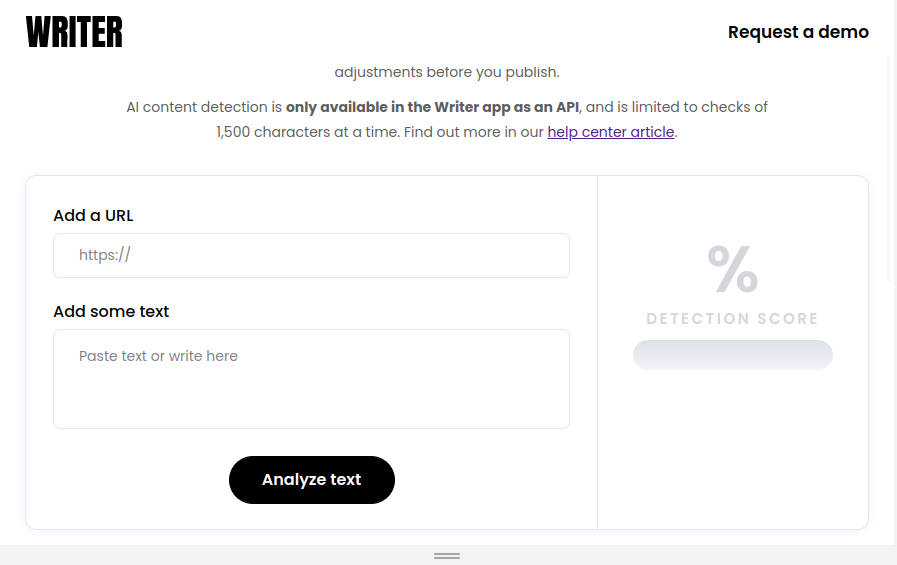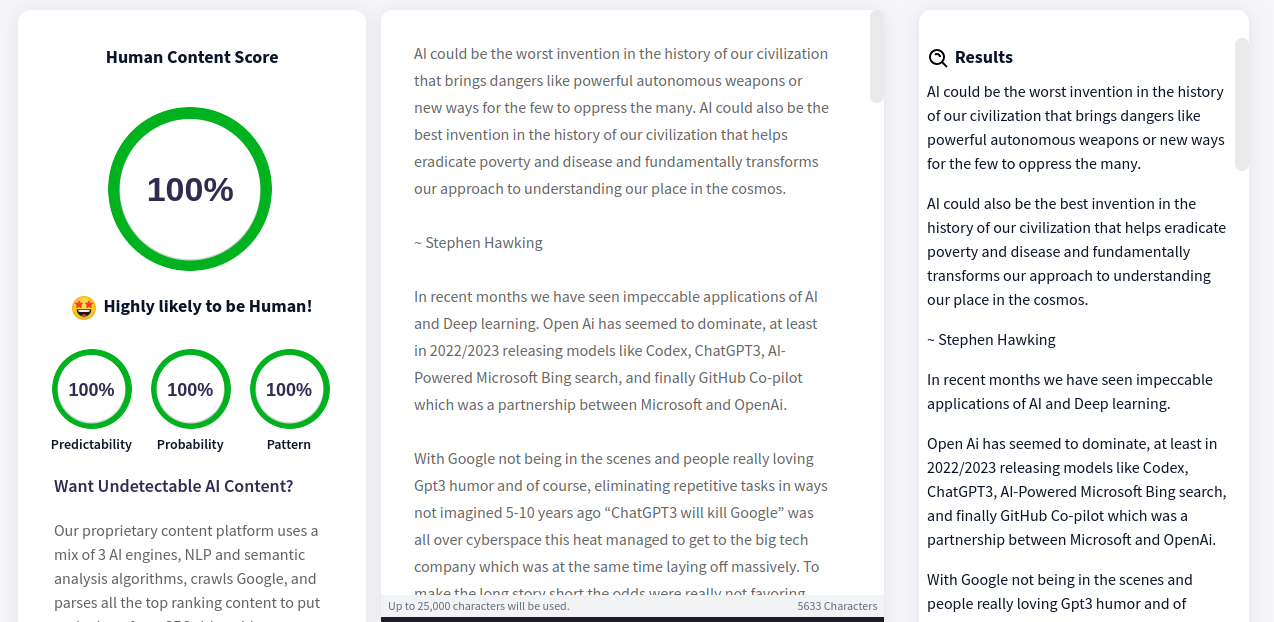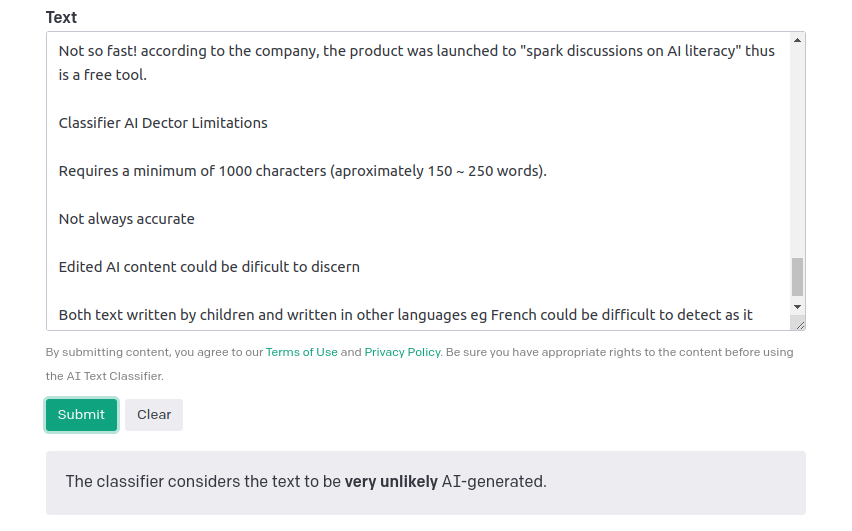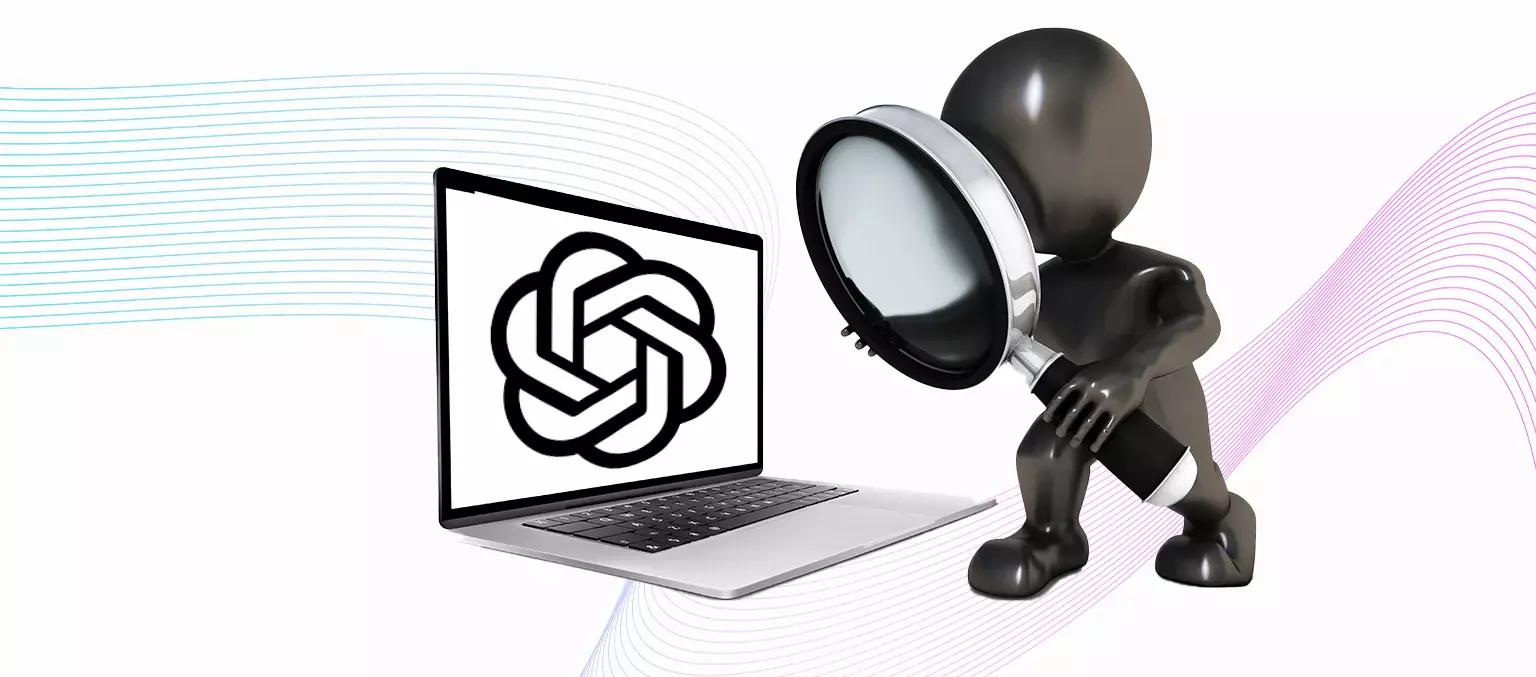According to Google’s Webmaster guidelines, ai generated text, lacks human touch and hence will be degraded and marked as spam. Google is the world’s first-stop site for people searching for answers.
In the world of content making, AI-generated content has become a threat since it’s hard to notice with the naked eye, but there is how “AI talks” and these tools, both paid and free, will help you detect AI behind the scenes.
What is AI generated content?
AI-generated content refers to any content (not limited to text) developed by an AI model or a Machine Learning algorithm.
This can be text, images, video, or audio. Some of the applications that can achieve this are ChatGPT for ai generated text and Dalle-2 for ai generated images. See what ChatGPT is in the article: Exploring the Capabilities of Chat GPT a comprehensive guide
In this article, we’ll focus on AI detection tools for text only.
What are the best free AI content checkers?
1. Writer
I stumbled onto King Solomon’s mines and met this tool, not even Open AI has such a sleek interface leave alone a GPT3 detector. It is powered up by a third-party API thus has limits on the number of characters that can be evaluated (currently at 1500 characters) this being their only bottleneck.
Writer allows two ways to evaluate your text: inserting the final URl or simply pasting your text. After passing or failing the litmus test results are displayed on the RHS in percentage form and a suggestion on how to improve the text by rephrasing. You literally don’t have to signup for an account to use the free version. To analyze content at a large scale, use the paid version which has no limits. More on Writer’s AI content detector.

2. Content at Scale
This is what Content at Scale says about itself,

This isn’t an AI writing assistant, this is a human level, long-form, blog post producing machine!
They use a mix of three AI engines to rephrase your content in case it fails and you need to clear the small errors, sometimes you write content and AI insists “That’s AI-generated” so you have to rephrase a few words. I never analyze articles that I have written myself but I once in a while check submissions done by other authors. I put this post to the test: You all will very soon forget ChatGPT3 to see what this tool thinks of it and also illustrate its capabilities. Below are the results.

For my esteemed mobile device users:

I think they still need to work on their UI, especially the Tablet mode.
3. Originality.AI
Originality was built with publishers in mind and therefore since good things come in pairs, it comes with a plagiarism detector tool too which they think “could be better than your current dusty tool”.
I put this article into test Step-by-Step Guide to Setting up Microsoft Purview with Watermarks and these were the results.

but the UI is not the best and some features like the full website scan don’t seem to work and you strictly need an account.
I decided to check the same content with my best tool 
you just paste a link and they pull the article.
Overall, Originality is not a bad tool but it’s not the next-gen easy-to-use tool online.
4. Copy Leaks
Copy Leaks does not only offer an AI-generated detector but also a plagiarism tool that apparently you have to pay for so I did not test it out. To use the AI detector, it’s easy to use and you don’t need an account leave alone a credit card. Just paste in random text and they will determine whether it’s from a bot or humanly. Copy Leaks will also give a percentage if you keep hovering on the text as illustrated below (check bottom LHS)

5. Open AI’s Classifier
Open AI has been on the center stage all along as far as this pre-trained text generation disruptive technology is concerned. Classifier cannot still do much as Writer does ie: pull an article from a given link, and award a percentage score but you can trust whatever report this tool throws back. How will you not?
Not so fast! according to the company, the product was launched to “spark discussions on AI literacy” and thus is a free tool.
Classifier AI Dector Limitations
- Requires a minimum of 1000 characters (approximately 150 ~ 250 words).
- Not always accurate
- Edited AI content could be difficult to discern
- Both texts written by children and written in other languages eg French could be difficult to detect as it was trained with adult and English written data.
I tested this article, meet the results and the UI.

